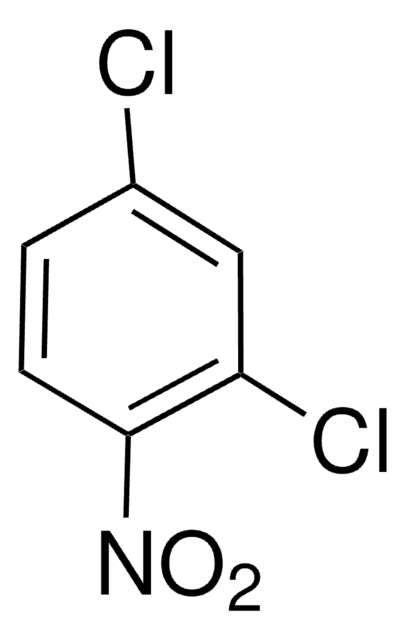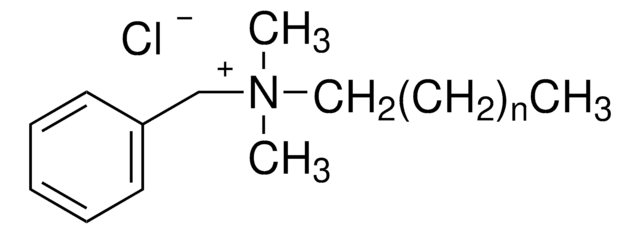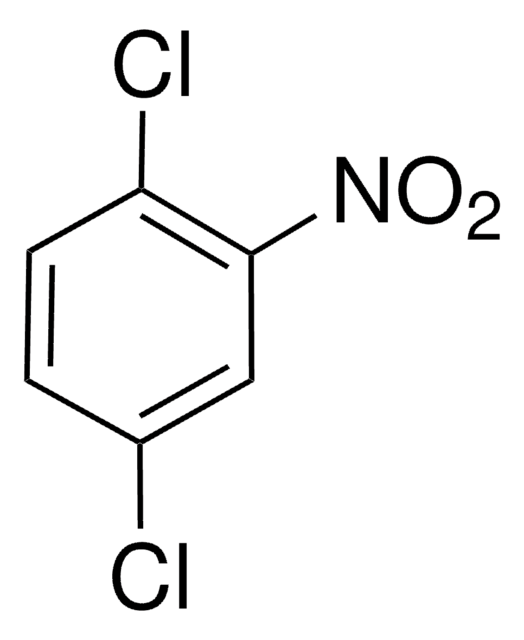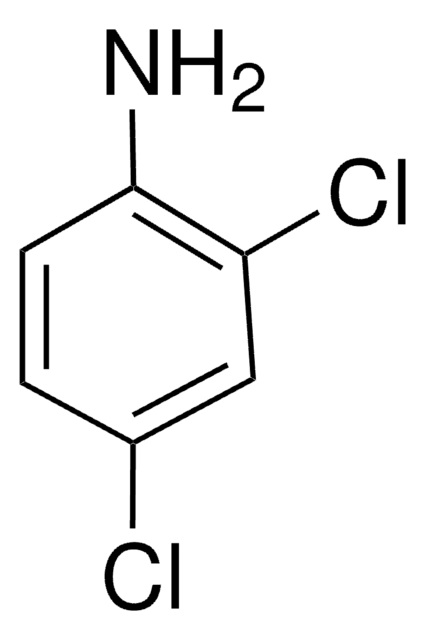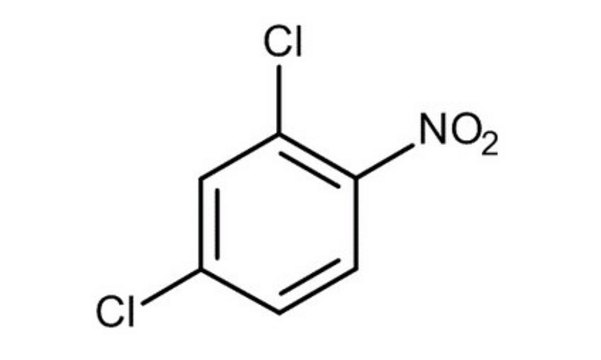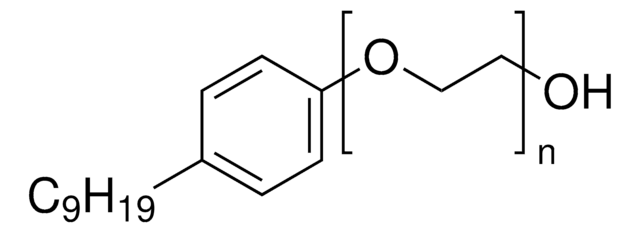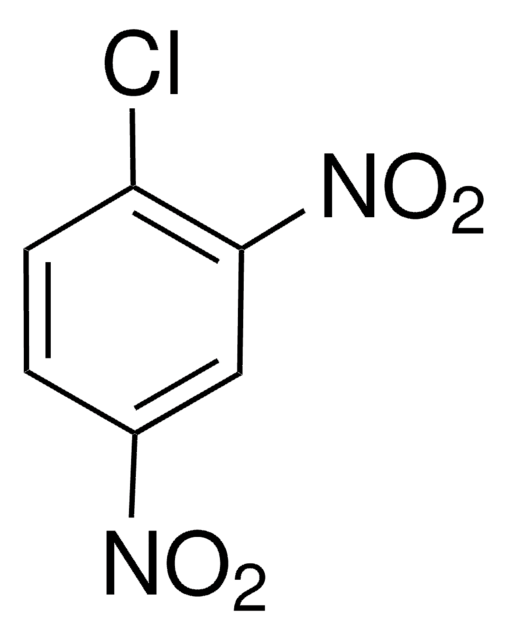推荐产品
等级
purum
方案
≥98.0% (GC)
沸点
258 °C (lit.)
mp
29-32 °C (lit.)
30-32 °C
SMILES字符串
[O-][N+](=O)c1ccc(Cl)cc1Cl
InChI
1S/C6H3Cl2NO2/c7-4-1-2-6(9(10)11)5(8)3-4/h1-3H
InChI key
QUIMTLZDMCNYGY-UHFFFAOYSA-N
正在寻找类似产品? 访问 产品对比指南
替代产品
产品编号
说明
价格
警示用语:
Danger
危险分类
Acute Tox. 3 Dermal - Acute Tox. 4 Oral - Aquatic Chronic 2 - Carc. 1B - Muta. 2 - Skin Sens. 1B
储存分类代码
6.1C - Combustible acute toxic Cat.3 / toxic compounds or compounds which causing chronic effects
WGK
WGK 3
闪点(°F)
305.6 °F
闪点(°C)
152 °C
个人防护装备
dust mask type N95 (US), Eyeshields, Gloves
法规信息
新产品
Maja Aleksic et al.
Toxicology in vitro : an international journal published in association with BIBRA, 22(5), 1169-1176 (2008-04-29)
A large proportion of allergic skin reactions are considered to be the result of skin exposure to small organic chemicals that possess the intrinsic ability to covalently modify skin proteins, either directly or following activation. In the absence of information
Makoto Ohnishi et al.
The Journal of toxicological sciences, 34(2), 233-237 (2009-04-02)
Oral administration of 2,4-dichloro-1-nitrobenzene (2,4-DCNB) causes kidney tumors in the rat. The objective of the present study was to identify the chemical structure of 2,4-DCNB metabolites in urine. Urine from 2,4-DCNB fed rats was more yellow than urine from control
P A Botham et al.
The British journal of dermatology, 117(1), 1-9 (1987-07-01)
The fate of 2,4-dinitrochlorobenzene, a potent contact sensitizing chemical, and 2,4-dichloronitrobenzene, a non-sensitizer, was compared following their application to the skin of BALB/c mice. Although both chemicals were able to bind to protein in vitro and were capable of being
Hirokazu Kano et al.
Archives of toxicology, 86(11), 1763-1772 (2012-06-26)
Carcinogenicity and chronic toxicity of 2,4-dichloro-1-nitrobenzene (2,4-DCNB) were examined by dietary administration to F344/DuCrj rats and Crj:BDF(1) mice of both sexes for 2 years. Dietary administration commenced when the animals were 6 weeks old. The dietary concentration of 2,4-DCNB was 0 (control)
Contribution of caffeine and flavanols in the induction of hepatic Phase II activities by green tea.
A Bu-Abbas et al.
Food and chemical toxicology : an international journal published for the British Industrial Biological Research Association, 36(8), 617-621 (1998-09-12)
Aqueous extracts of green tea, at concentrations of 2.5. 5.0 and 7.5%, were administered to rats as the sole drinking fluid for 4 weeks. Hepatic glutathione S-transferase (GST) activity, determined using 1-chloro-2,4-dinitrobenzene (CDNB) and 3,4-dichloronitrobenzene (DCNB) as substrates, and UDP-glucuronosyl
我们的科学家团队拥有各种研究领域经验,包括生命科学、材料科学、化学合成、色谱、分析及许多其他领域.
联系技术服务部门